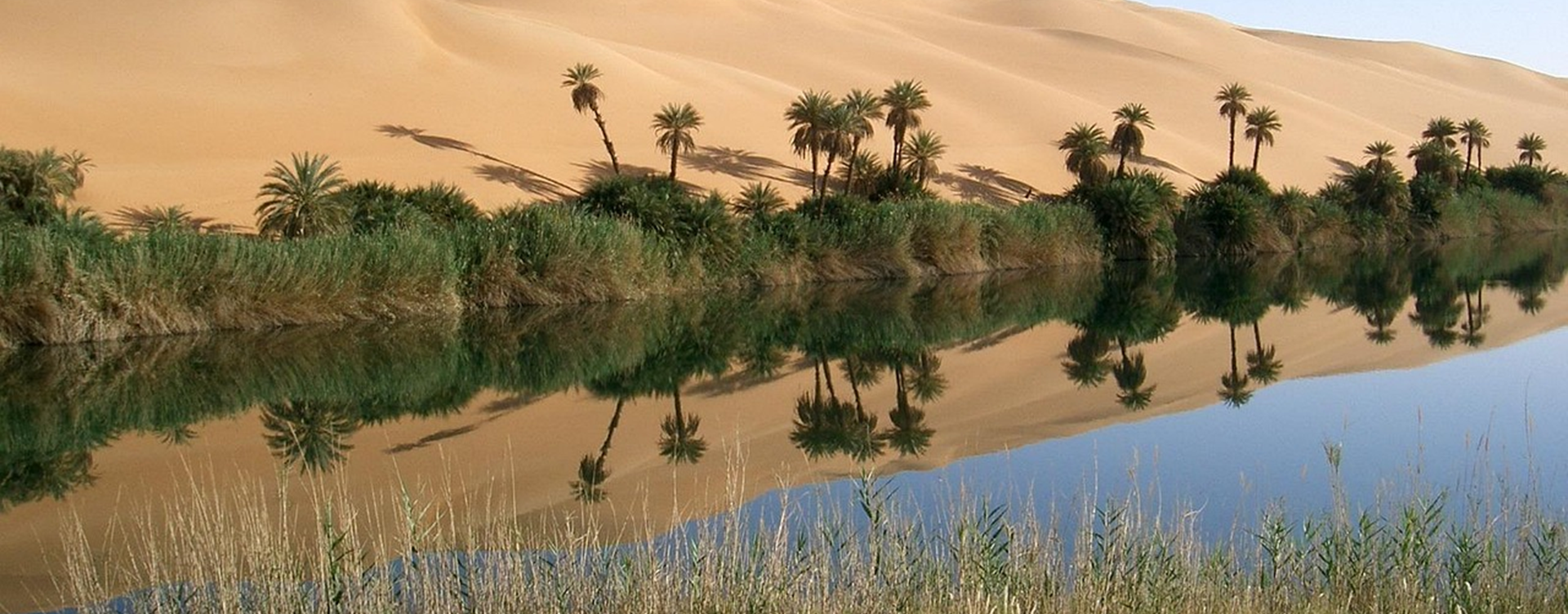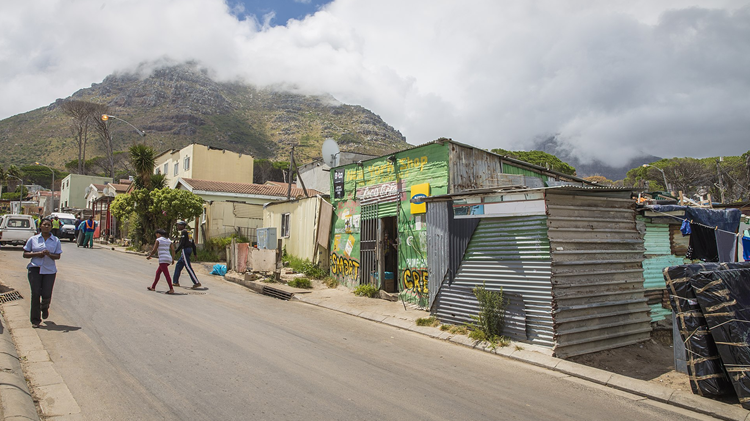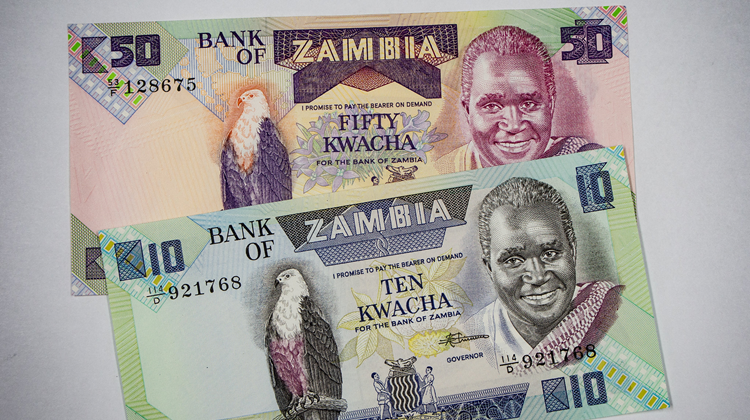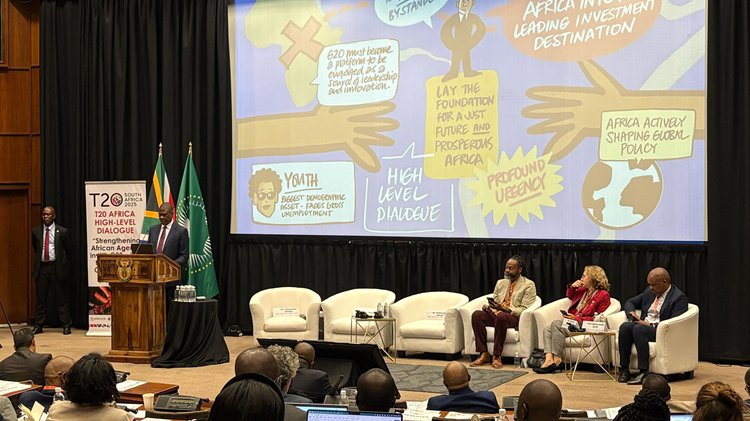Beyond oil wealth: Libya’s path to institutional renewal

Political renewal and governance reform are crucial for Libya to transform its resource wealth into lasting stability and shared growth.
Libya, endowed with vast oil wealth and a strategic Mediterranean coastline that connects it directly to Europe and the Middle East, has spent nearly 15 years struggling to achieve political stability and effective governance. Few countries illustrate more clearly how natural wealth can become both a blessing and a burden. Ever since Gaddafi’s fall in 2011, Libya has faced rival governments, fragile state institutions and constant conflict: challenges that have taken a heavy toll on an economy still heavily dependent on hydrocarbons (i.e., oil and gas).
Hydrocarbons continue to dominate Libya’s economic landscape, accounting for more than 95% of total export earnings, over 90% of government fiscal revenues and the bulk of its economic output. Holding around 2.8% of the world’s proven crude oil reserves, Libya commands a significant role in the global energy market. According to Libya’s Central Bank, oil revenues accounted for an estimated 98% of Libya’s total government revenues in 2021. In 2023, Libya ranked as the seventh-largest crude oil producer within OPEC and the third-largest producer of total petroleum liquids in Africa, behind Nigeria and Algeria.
Before the 2010 uprising, Libya’s economy was valued at approximately US$88.6 billion (MER), driven primarily by hydrocarbon revenues. After the uprising in 2011, however, the country’s economy contracted by 50.3% in a single year, one of the steepest drops globally at the time, as its oil production declined from about 6.2 million barrels of oil equivalent to just 1.8 million barrels of oil equivalent. Exports declined from US$58.7 billion in 2010 to US$16.8 billion in 2011, while imports declined from US$28.2 billion to US$10.9 billion. Unemployment increased from 13.5% to 19% during the same period, deepening poverty and hardship across the country. Libya’s economic turmoil has had far-reaching consequences both regionally and globally, as the disruption of its oil exports led to a temporary shortfall in the global market. These shocks underscored how quickly prosperity can unravel without resilient institutions.
After the uprising in 2011, Libya’s economy contracted by 50.3% in a single year
Historically, Libya has been a key country of destination in North Africa, attracting labour not only from neighbouring countries but also from Western Africa, the Middle East and South Asia. Before the conflict, Libya hosted an estimated 2.5 million migrant workers who were employed across key sectors, including services, industry, energy and agriculture. Their abrupt departure curtailed remittance flows and compounded unemployment pressures in neighbouring countries such as Chad, Egypt, Niger, Sudan and Tunisia. At a broader level, the intensification of the conflict has further exacerbated regional instability, deterring tourism and foreign investment and undermining economic resilience across North Africa.
In 2024 and 2025, new challenges further revealed the fragility of Libya’s institutional unity. The UN Special Representativecautioned that ‘all Libyan institutions have outlived their legitimate mandates’ and emphasised the urgent need for a government with genuine public backing to bridge the divide between East and West. At the same time, central bodies such as the House of Representatives (elected in 2014) continue to face growing questions about their democratic legitimacy and the renewal of their mandate.
Libya’s economy has yet to recover to its 2010 level. In 2023 (the latest available historical data), Libya’s GDP was estimated at US$71.2 billion, about 19.1% below its value in 2010. Political instability continues to pose risks to the energy sector and the broader economy. In April 2022, nationwide protests led to blockades at several major ports and oil fields, driving Libya’s oil production down from an average of 1.2 million barrels per day in 2021 to around 0.5 million barrels per day by July 2022. According to the Libya country analysis brief, the country’s crude oil production has continually fluctuated because of armed conflict and political instability since Libya’s 2011 civil war.
Today, Libya’s political and economic systems remain fractured, shaped by the collapse of central authority and years of competing power centres. Rather than a unified government, the country is divided between rival administrations and institutions, each claiming legitimacy. This constant competition over power and resources weakens state cohesion, undermines service delivery and fuels ongoing instability.
Yet, beneath this fragmentation, Libya holds considerable potential. According to a recent study by the ISS African Futures team, implementing integrated sectoral reforms could raise the country’s average economic growth to 5.4% between 2026 and 2043, compared to just 3.5% under a business-as-usual scenario. This faster growth would raise GDP per capita by an additional US$3 150 and reduce poverty to 13.5% of the population (at the US$6.85 threshold). In practical terms, this means that by 2043, about 1.1 million more Libyans could be lifted out of poverty.
The study further points to governance reform as one of the most critical levers for unlocking Libya’s development potential. Improved governance alone could raise GDP per capita by an additional US$570 above a business-as-usual scenario and lift nearly 371 000 more Libyans out of poverty. Achieving this, however, requires decisive leadership to address the country’s core governance challenges—persistent political instability, insecurity, extremism and fragile institutions.
Improved governance in Libya could raise GDP per capita by an additional US$570 above a business-as-usual scenario
Turning Libya’s trajectory around will therefore require confronting the deep governance deficit that has persisted since the collapse of central authority in 2011. Institutional fragmentation, entrenched corruption and the absence of a unified political framework have continued to erode service delivery and public trust. Addressing these challenges demands renewed national reconciliation and inclusive political dialogue to bridge divisions among rival authorities. Dialogue alone is not enough; the priority must be building resilient institutions capable of ensuring stability and continuity beyond individual leaders. Judicial reforms, empowered anti-corruption mechanisms and transparent management of state revenues would lay the groundwork for a stronger rule of law and accountable governance.
Economically, Libya cannot afford to remain dependent on hydrocarbons, even though oil will remain a vital source of national income for years to come. Greater transparency in the management of oil revenues, particularly within the National Oil Corporation and the Central Bank, is crucial to ensure that wealth is equitably distributed and benefits all Libyans. Simultaneously, diversification should be prioritised through investment in agro-processing, renewable energy, infrastructure and service industries. Expanding vocational training and youth employment programmes would address Libya’s acute unemployment problem while equipping its young population to drive growth beyond oil.
Finally, Libya’s transition will require constructive and coordinated international support. Too often, external actors have pursued competing agendas that deepen divisions rather than heal them. The United Nations, African Union, European Union and bilateral partners should work towards a common framework aligned with Libya’s priorities. International engagement should also balance short-term humanitarian assistance—vital for displaced persons and flood-affected communities—with longer-term investments in development and institutional resilience.
Elections will eventually be necessary to legitimise Libya’s governance structures, but they must be pursued cautiously and only once security and institutional conditions make credible polls feasible. Ultimately, Libya’s future will hinge on its ability to rebuild trust, strengthen governance and harness its natural wealth for inclusive development that goes beyond resource dependency. With sustained reform and renewed unity, the country could yet transform from a source of regional fragility into a pillar of North Africa’s long-term stability and growth. Libya could not only stabilise its domestic economy but also reassert its place as a bridge between Africa, Europe and the Middle East.
Image: WikiImages/Pixabay
Read the full recently updated country report for Libya here.
Republication of our Africa Tomorrow articles only with permission. Contact us for any enquiries.






